Xiaomi 11T Pro


The Xiaomi 11T Pro is a good-value 5G phone with a top-end processor. It displays a decent spread of abilities across gaming, video streaming and the camera hardware. The photos it captures are a little inconsistent, and the design could be mistaken for that of a much cheaper Xiaomi, but there’s enough substance to make up for it.
Pros
- Powerful processor
- Camera applies super-powered HDR where needed
- Large, bright screen
- Very fast charging
Cons
- Inconsistent character to its photos
- Unimaginative design
Availability
- UKRRP: £599
Key Features
- Speedy chargingThe 11T supports 120w charging, making it one of the quickest around
- ScreenThere’s a 120Hz screen on the front
- High-end specsSnapdragon 888, 256GB storage
Introduction
The Xiaomi 11T Pro is a mid-range phone with a top-end processor. It’s a slightly more affordable alternative to the Xiaomi Mi 11.
Like so many Xiaomi Android devices, the 11T Pro is made for the tech enthusiast who demands good value. It features a Snapdragon 888 CPU, a 108-megapixel camera, 120W charging, and a 120Hz AMOLED screen. All in all, it brings high-end flair buyers looking for the best mid-range phone.
If camera quality is a priority, you’re probably better off with a Google Pixel 6. The Xiaomi 11T Pro can take great photos, but it isn’t all that consistent. However, it has a larger screen and loud stereo speakers – which are huge positives if you care as much about gaming and the video streaming experience as photography.
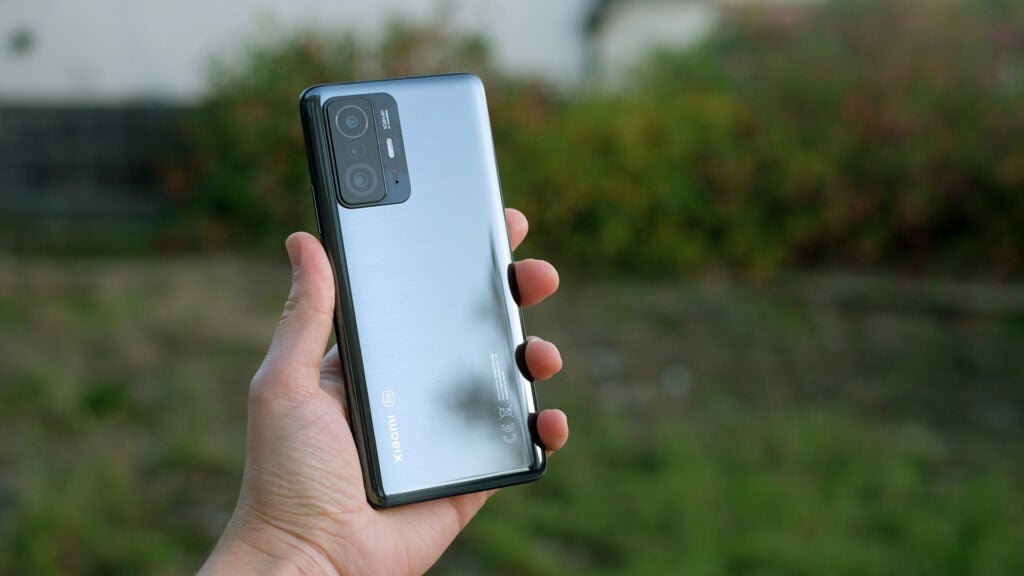
The Xiaomi 11T Pro comes in two flavours: 128GB of storage for £599, or 256GB for £649.
A lot of my impressions in this review will also apply to the step-down Xiaomi 11T. It costs £549 but comes with 256GB of storage, making it £100 cheaper than the Pro version. What do you lose? Charging is at a rate of 67W rather than 120W – which is still very quick, mind – and it features a MediaTek Dimensity processor rather than a Snapdragon 888.
There may well be some other differences, too, which wouldn’t be apparent without having the two devices side-by-side. Nevertheless, the Xiaomi 11T seems a worthy alternative if you’re not fussed about the extra gaming punch of the Pro version.
Design and Screen
- Fairly typical looking Xiaomi device
- IR blaster, but no headphone jack or IP68 rating
- Gorilla Glass Victus on the front
Nowadays, on first glance it’s often difficult to tell apart entry-level phones from higher-end models such as the Xiaomi 11T Pro. This is particularly true of Xiaomi’s recent Androids, all of which seem to have cameras made to look oversized and techie.
However, there’s a difference. Where a phone such as the Xiaomi Poco X3 Pro comes with a plastic back and sides, the Xiaomi 11T Pro has a glass rear.
Xiaomi has done something a little unusual with this particular finish, however: it has a brushed aluminium effect underneath the glass. I see plenty of plastic phones faking it as glass ones, but the Xiaomi 11T Pro is a glass phone pretending to be aluminium – despite glass being seen by most as a higher-end finish over metal.
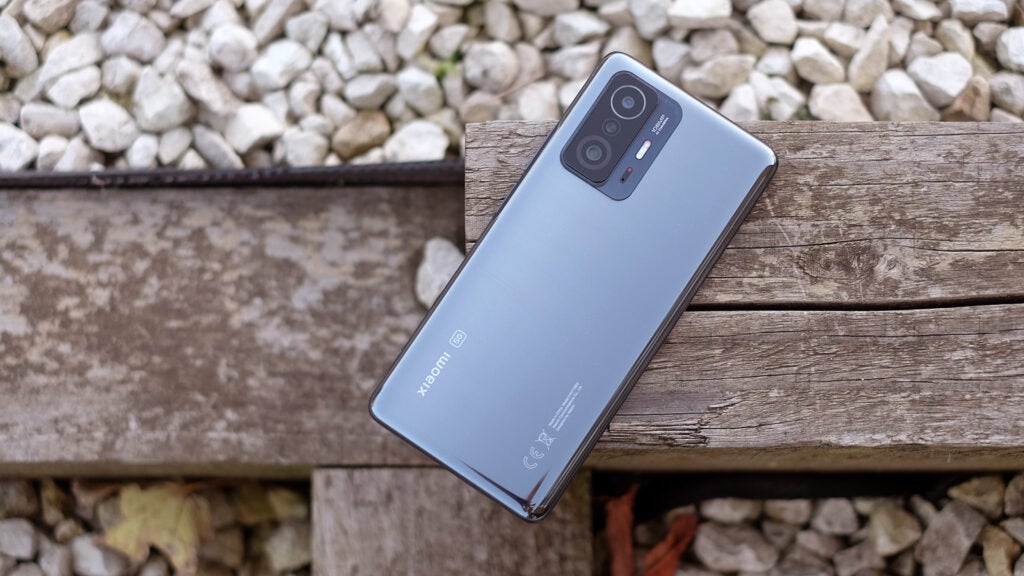
This isn’t your only option. The Xiaomi 11T Pro is also available in white and blue, and those versions don’t have the aluminium sheen.
The Xiaomi 11T Pro’s sides are plastic, much like those of the OnePlus 9. That phone is a little more stylish than this Xiaomi; a little less anonymous. But in one sense the 11T Pro actually competes with the higher-end OnePlus 9 Pro since it has a larger screen. As with so many Xiaomi phones, the Xiaomi 11T Pro appears to be made for value-conscious phone buyers.
If you want a more deliberate sense of style from a Xiaomi, check out the step-up Xiaomi Mi 11. That’s right, while the Xiaomi 11T Pro sounds like it should be higher-end than the Mi 11, it’s actually a step below.
There are some neat sections to the outer hardware. The Xiaomi 11T Pro display is covered by Gorilla Glass Victus – Corning’s top-end toughened glass. It’s a tier above the glass used in the OnePlus 9 Pro.
The type of glass on the back isn’t specified, and is likely to be a cheaper Gorilla Glass alternative. However, I’d suggest you use the phone as I have, with the silicone case attached. Xiaomi also applies a screen protector in the factory, which is always welcome.
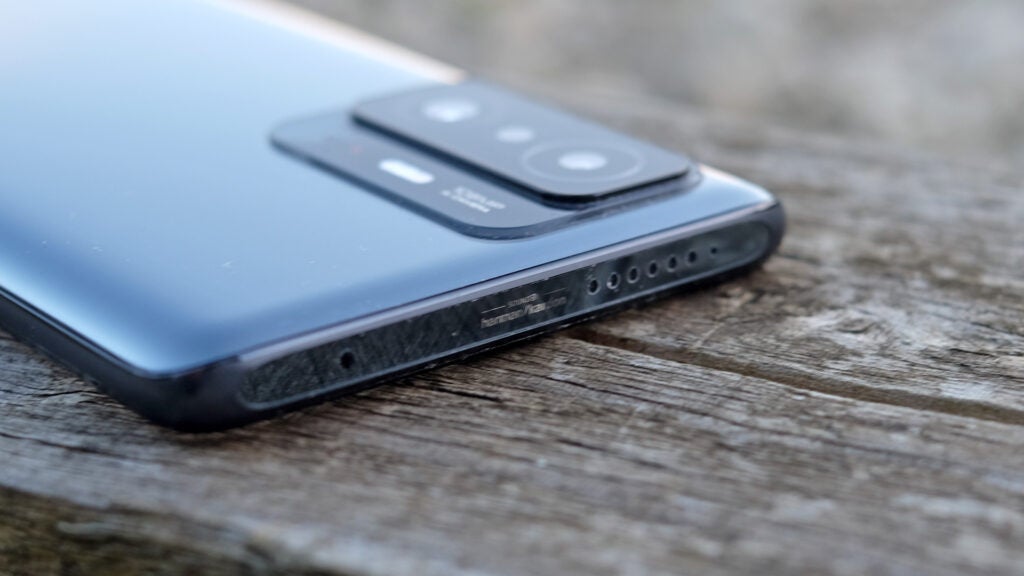
The Xiaomi 11T Pro comes with some good-quality speakers. It has two drivers, one on the bottom of the phone and another above the screen, appearing to fire out sound from the top as well as the earpiece vent on the phone’s front.
These speakers are loud, and better balanced than most. The above-screen speaker is only a little quieter and less bassy than the primary unit, so you get a good sense of stereo sound when holding the phone in a landscape position. They’re great for gaming, for video, or just listening to podcasts in a noisier environment.
This is typical Xiaomi stuff: you get plenty of features. However, the Xiaomi Mi 11T Pro uses a side-loaded fingerprint scanner rather than an in-screen unit of the type in the OnePlus 9. These are seen as a little less fancy, a little less glossy – but functionally, they’re just as good. This particular one takes a fraction of a second longer than some, but it’s reliable all the same.
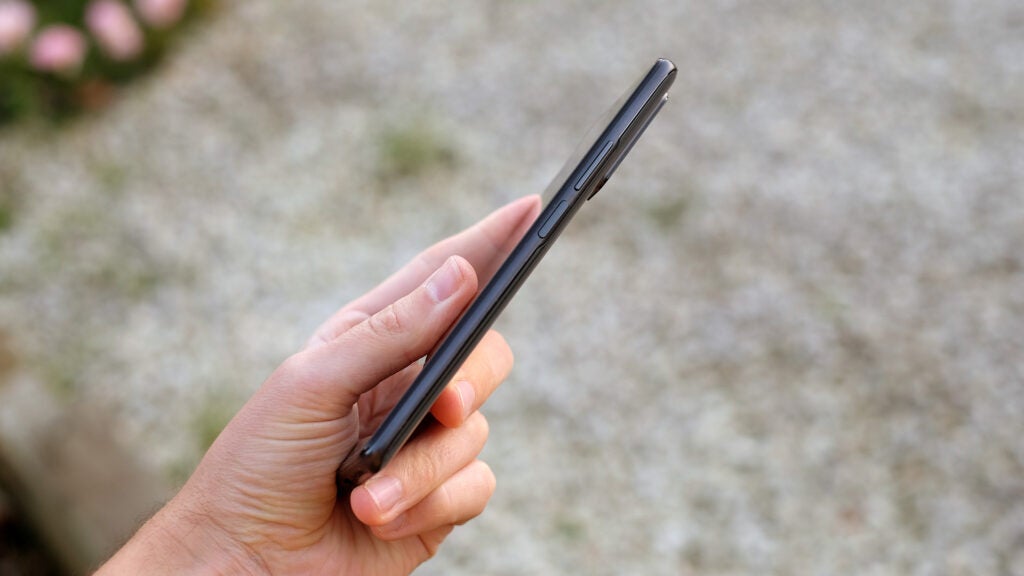
As is usual for a phone at this level, the Xiaomi 11T Pro doesn’t have a headphone jack, and water-resistance is a basic IP53. This means it should be fine in a bit of light drizzle, but you still need to be careful.
One of the key characteristics here is both a draw and a reason to be turned off. The Xiaomi 11T Pro is, like so many Xiaomi phones, quite large. It has a big screen, and not one that curves around the sides to minimise the phone’s footprint.
I’m a fan of large phones such as this; plus, it’s still a bit narrower than an iPhone 13 Pro Max at 76.9mm. But size is something to consider.
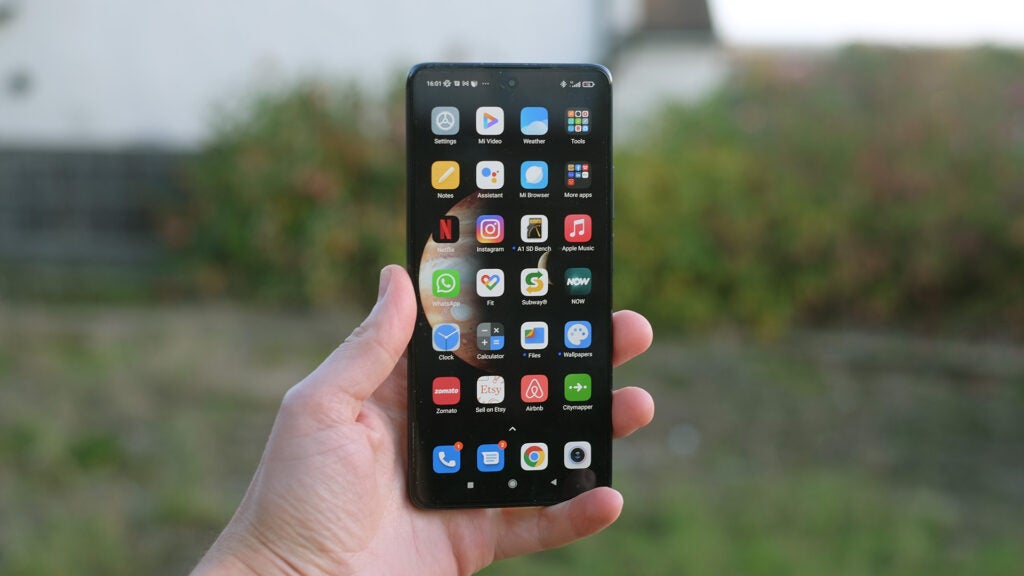
The Xiaomi 11T Pro features a 6.67-inch screen, like many Xiaomi phones including the Poco X3 Pro, the Xiaomi 11T, and the Redmi Note 10 Pro.
There are many affordable Xiaomi devices with great screens, but the 11T Pro does have a few advantages. First, as mentioned, it’s protected by Gorilla Glass Victus, where lower-end models use a step-down grade of glass. This screen is also brighter than most.
Xiaomi says it can reach peaks of 1000 nits, and 800-nit functional brightness when you’re in a bright environment. The highest measurement I recorded in a real-world scenario was 730 nits. It’s sufficient to ensure a clear screen in all conditions.
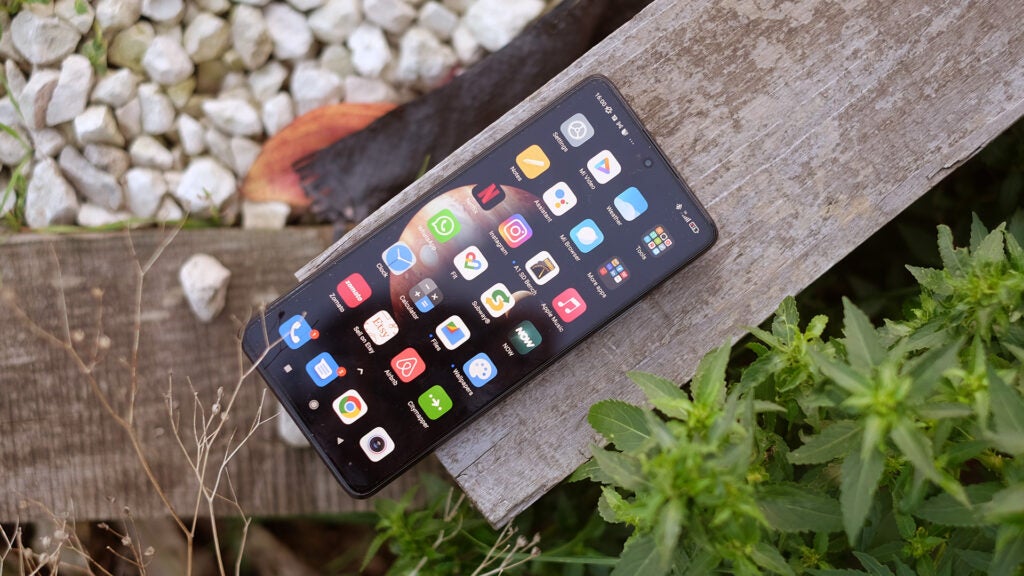
This is a 120Hz OLED screen, resulting in noticeably smoother scrolling than when using the 60Hz mode. Xiaomi also offers decent controls over the display’s colour calibration, letting you choose styles with more pop, or a more accurate representation.
I’d recommend sticking to a slightly less saturated mode since Xiaomi’s screen tuning isn’t clever enough to remove oversaturation when you look at photos you’ve taken in the Gallery. It appears better with the colour temperature warmed, too, since the default leans towards cooler blue-tinged whites. This does the display’s rich OLED colour no favours, in my opinion.
There’s just one other minor issue here. The Xiaomi 11T Pro’s screen skews blue at an angle, regardless of the colour tuning chosen. This is a common effect in OLED screens, but the latest high-end Samsung panels have managed to minimise the effect. Here it’s quite noticeable, although it’s the kind of thing you’ll notice on day one, and forget about by day three.
Performance
- Top-end specs, including the Snapdragon 888
- Impressive gaming performance
- It runs Android 11 with the company’s MIUI on top
The Xiaomi 11T Pro is a phone for people who care about performance, but don’t want to spend a fortune on a high-end processor. It comes with the Qualcomm Snapdragon 888 CPU, like several of today’s most expensive phones.
Those not fussed about having a Qualcomm chipset should also consider the Xiaomi 11T. It includes a MediaTek Dimensity 1200 processor and costs £100 less at the 256GB storage level.
I’ve had a good time with some of these high-powered MediaTek phones, such as the OnePlus Nord 2, and would be perfectly happy with the standard Xiaomi 11T. However, the 11T Pro is certainly more powerful.
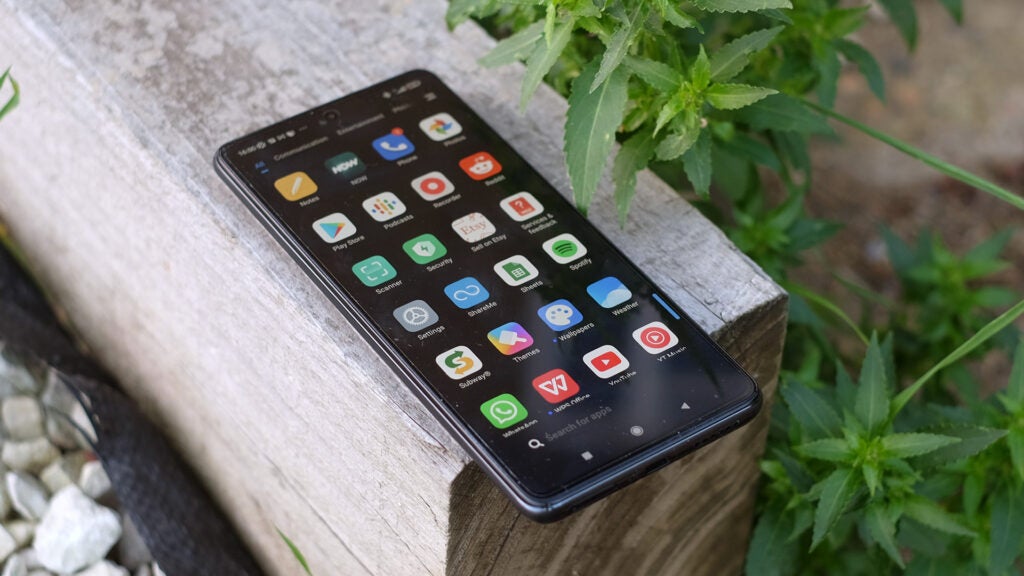
It scored 3526 points in Geekbench 5 (807 per core), very similar to a score you might see from a OnePlus 9. And the lower-end Dimensity 1200 actually records very similar results.
Things change slightly when you use a purely gaming-driven test, though. The Xiaomi 11T Pro scores 5906 points in 3DMark’s Wild Life test – 40% higher than you might see from a Dimensity 1200 phone such as the standard Xiaomi 11T.
Where you’ll actually see these benefits is something to consider. For example, Fortnite is one of Android’s most demanding games, but at the moment you can’t run it in the higher-end 60fps mode. This is something Epic seems to unlock on a per-phone basis, and the Xiaomi 11T Pro is currently stuck at a max of 30fps at the time of review. We’re not getting full use of the phone’s power.
The game still runs great – but this is a reminder that, on occasion, a great system-on-chip isn’t always enough to ensure you see the very best from games. Still, everything I tried ran perfectly. There were no obvious slow-down moments in Asphalt 9 on the action getting busy, and ARK: Survival Evolved plays happily maxed-out.
This is up there with the OnePlus 9 as one of the most powerful phones you can get for £600. But gamers should also consider even more affordable powerhouses such as the Xiaomi Poco F3 and Poco X3 Pro. They get you similar real-world results for less cash.
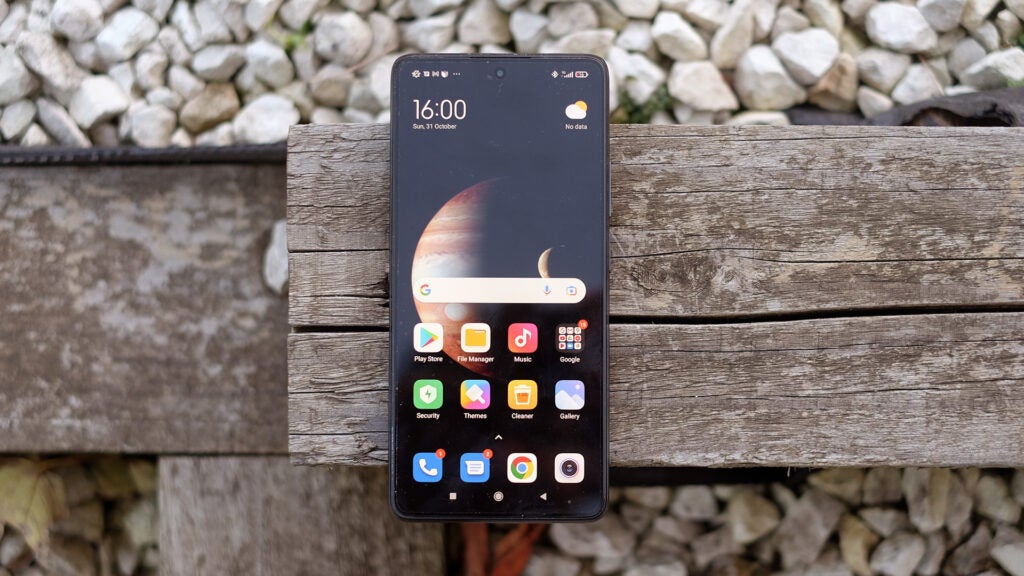
The software inside the 11T Pro is the usual Xiaomi fodder. It runs Android 11 with the company’s MIUI on top.
It’s a decent interface, but the latest version does make one objectionable change. The pull-down menu gesture is now segmented. Flick from the left side of the screen for your notifications; flick down from from the right for the “control centre” feature toggles.
With a phone of this size, you’ll almost always flick from the right side when using one hand rather than two. This means to access your notifications, you then need to swipe right – it’s another gesture added to this version of MIUI.
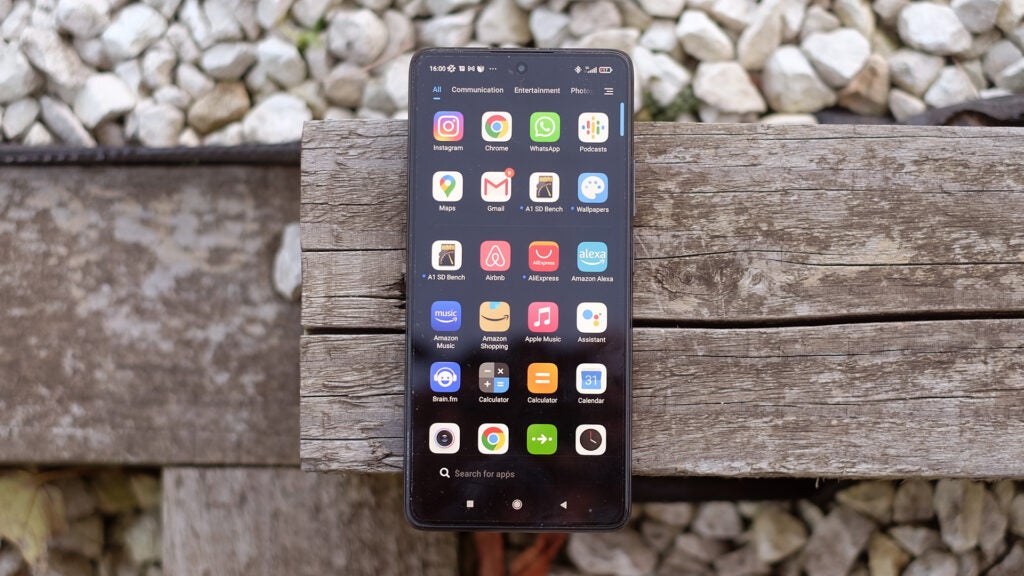
I find this style clunky, particularly when I want to see my notifications far more often than the Wi-Fi toggle button. Older versions of MIUI didn’t do this.
Still, that’s the one issue I have with what is otherwise a pretty practical and decent-looking custom interface.
Camera
- Three cameras on the back
- The 108-megapixel Samsung HM2 primary sensor is the star
- No useless or filler cameras here
The Xiaomi 11T Pro has three cameras on its rear and one on the front. While its 108-megapixel Samsung HM2 primary sensor is the star, this is also a good example of Xiaomi getting a mid-price camera strategy right.
There are no useless or filler cameras here. The other two rear cameras are an 8-megapixel Sony IMX355, which performs fairly well given its relatively low resolution, and a 5-megapixel macro. Again, this is far better than most dedicated macro cameras because it has a “zoomed in” lens view, making it possible to get genuine macro-grade detail without needing to get unreasonably close to your subject.
They both perform far better than they sound on paper. The only issue is Xiaomi has used this hardware in some of its cheaper models.
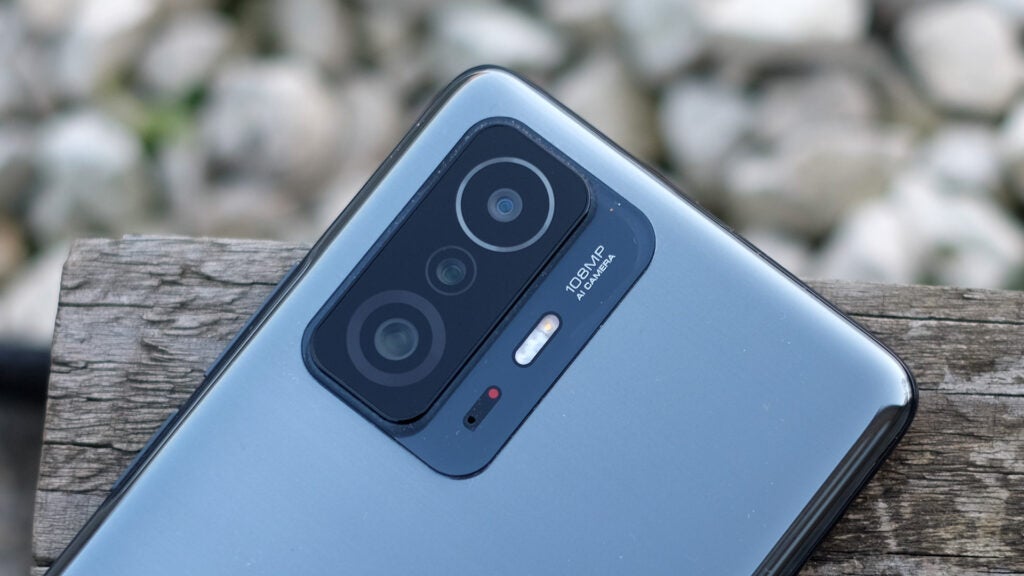
My first impressions of the Xiaomi 11T Pro camera were almost entirely positive. Shooting feels more-or-less instantaneous, the Auto HDR mode seems to breeze through just about every situation, and there’s a Night mode that improves low-light images quite dramatically.
Looking at the Xiaomi 11T Pro’s images on a laptop for a closer inspection revealed a few issues that mean this phone, while good, isn’t a match for a device such as the Google Pixel 6 Pro.
The first concerns HDR. This phone can use nuclear-grade HDR when needed, but its application seems to be based around a limited number of “gears” or levels that kick in when a scene meets a certain set of criteria. It leads to inconsistency, where some of your images will look as though they were taken with a totally different camera.

On occasions HDR is overdone, leading to a tonal flattening of the image. At other times colour saturation is cranked too high as well, even if you switch off the “AI” mode that tends to boost colour further.

The look of the Xiaomi 11T Pro’s images down at pixel level isn’t best-in-class, either. They appear a little too processed, smoothed or manipulated. It’s a pretty common effect in high-megapixel sensors that produce lower-resolution results. Still, this isn’t a major issue unless you’re going to crop into pictures and blow them up to A3 size to put them up on a wall.
On occasion the lack of optical image stabilisation will become evident, too. I’ve seen some minor HDR ghosting in stationary objects, and the detail of low-light photos isn’t best in class.


Using the Xiaomi 11T Pro’s camera feels like a flagship experience, but the final results aren’t quite at the level of the best camera phones. Still, there are some processes at which it really excels.
The Xiaomi 11T Pro is particularly good at rendering cloud contours. This stands for both the main camera and the ultra-wide, suggesting it has much more to do with the tone mapping in the software rather than anything special in the hardware.


Also note that this phone doesn’t have a zoom camera. The Xiaomi 11T Pro’s camera app lets you take 2x images, but these are digital zooms. They do feature genuinely more detail than 1x shots, properly resolving detail that is obfuscated in the standard picture, such as chain-link fences. However, they don’t hold up to further cropping and aren’t a perfect replacement for a genuine zoom lens.
Xiaomi takes things a step further with the 108-megapixel mode. However, I’d suggest avoiding this most of the time since fine detail can either look dithered or over-sharpened – and, more important, you lose HDR. This means you’re likely to see big blown-out areas in a lot of scenes.






How about video? The Xiaomi 11T Pro can shoot at up to 8K resolution, 30 frames per second. Or up to 4K resolution at 60 frames per second.
I’d suggest sticking to the latter, or 4K at 30fps, since there’s no stabilisation at 8K. 4K video looks great as it is.
The Xiaomi 11T Pro’s front camera uses 16-megapixel Omnivision hardware. Xiaomi has used this in some of its cheaper phones, but it holds up pretty well. While selfies never look as if they have 16 megapixels of detail in them, the detail they do have holds up even in poor lighting. This suggests there may be some 4-in-1 pixel binning going on here (even if the actual output is a 16-megapixel file).
Battery life
- There’s a hefty 5000mAh battery inside
- I wouldn’t call the Xiaomi 11T Pro’s stamina exceptional
- No wireless charging
The Xiaomi 11T Pro has a 5000mAh battery, the standard size for Xiaomi phones these days. It can comfortably last a full day of use, and in my experience at least outlasts the OnePlus 9.
If you’re upgrading from a lower-end Xiaomi with a similarly sized battery then you’ll find the 11T Pro’s battery life a little shorter in real-world use. But this may be down to the 120Hz screen, plus the fact that when you take the phone outdoors, the screen can get a whole lot brighter than some. Higher brightness equals faster battery drain.
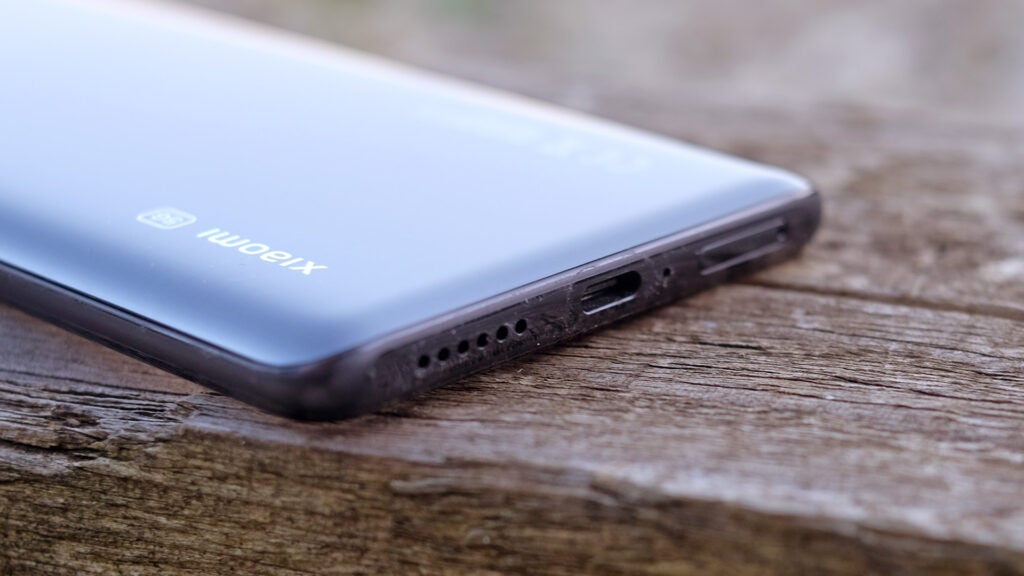
I wouldn’t call the Xiaomi 11T Pro’s stamina exceptional, but I’m entirely happy with it. This phone can outlast plenty of flagship phones, because they do often take a slight hit to battery capacity in order to slim down the frame by 0.5-1mm.
The main attraction here isn’t the battery itself, but the charging speed. This is one of the few phones to deliver 120W charging, which Xiaomi calls HyperCharge.
It can power up the phone in under 20 minutes, which is sensational.
Unfortunately, our Xiaomi 11T Pro didn’t come with a cable, so the 120W adapter was only able to draw around 60W from the supply using a cable from another Xiaomi phone. Xiaomi’s system requires the right kind of cable as well as the original adapter.
Even my lower-spec Xiaomi cable provides great results, though, taking the phone from 30% to 70% in just 10 minutes.
The Xiaomi 11T Pro doesn’t support wireless charging. That may be a deal-breaker for some, but at this level you’re unlikely to see ultra-fast wireless charging anyway, so any solution it did have would look ultra-slow next to the wired alternative.
Latest deals
Should you buy it?
You want a mid-price phone with flagship power A Snapdragon 888 processor makes this a match for some of the most expensive phones, particularly for gaming. Good stereo speakers elevate the experience there, too.
You want a stand-out camera or design The 11T Pro doesn’t look all that different to some of Xiaomi’s cheaper phones. And its camera, while a great performer in some areas, produces slightly inconsistent images. It’s not best in classs.
Final thoughts
The most compelling Xiaomi phones offer a taste of the flagship phone experience for much less money.
The Xiaomi 11T Pro is more like a OnePlus phone, in that it tries to offer 90% of what the most expensive phones include, at perhaps 60% of the cost. A Snapdragon 888 CPU is the most important change over the cheaper Xiaomi models, but 120W charging deserves a mention, too, even if I wasn’t able to see the full extent of its power first-hand.
Its camera offers powerful HDR, although its approach to the technique often means the character of the images it captures varies too much from one scene to the next. A device such as the Google Pixel 6 is probably better for keen photographers.
The Xiaomi 11T Pro design is also rather anonymous, especially compared to the more distinctive OnePlus 9 and the step-up Xiaomi Mi 11.
However, a phone such as this doesn’t need to nail every element. It’s a generalist, and is one the best in this category of devices right now.
How we test
We test every mobile phone we review thoroughly. We use industry standard tests to compare features properly and we use the phone as our main device over the review period. We’ll always tell you what we find and we never, ever, accept money to review a product.
Used as our main handset during test period
Camera tested in variety of situations with all modes
Tested with synthetic benchmarks and real world use
FAQs
It comes with IP53 dust/water-resistance, which is about as low as you’ll see in a phone while still having a rating.
No, this phone only offers cabled charging.
Like most phones at this level, the Xiaomi 11T Pro doesn’t have a 3.5mm headphone jack.
Full specs
The post Xiaomi 11T Pro appeared first on Trusted Reviews.
Source Trusted Reviews ,Home Appliances Reviews

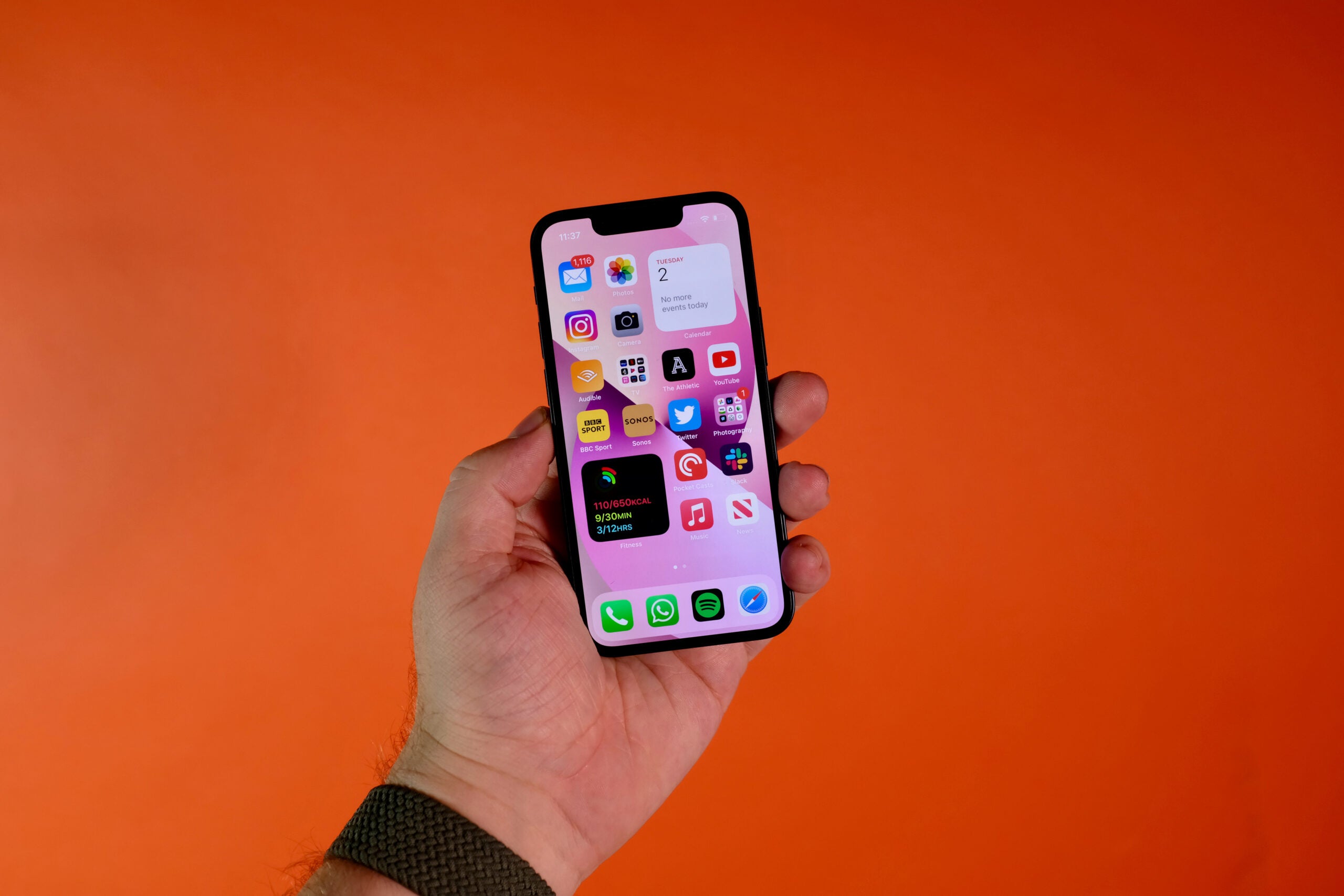

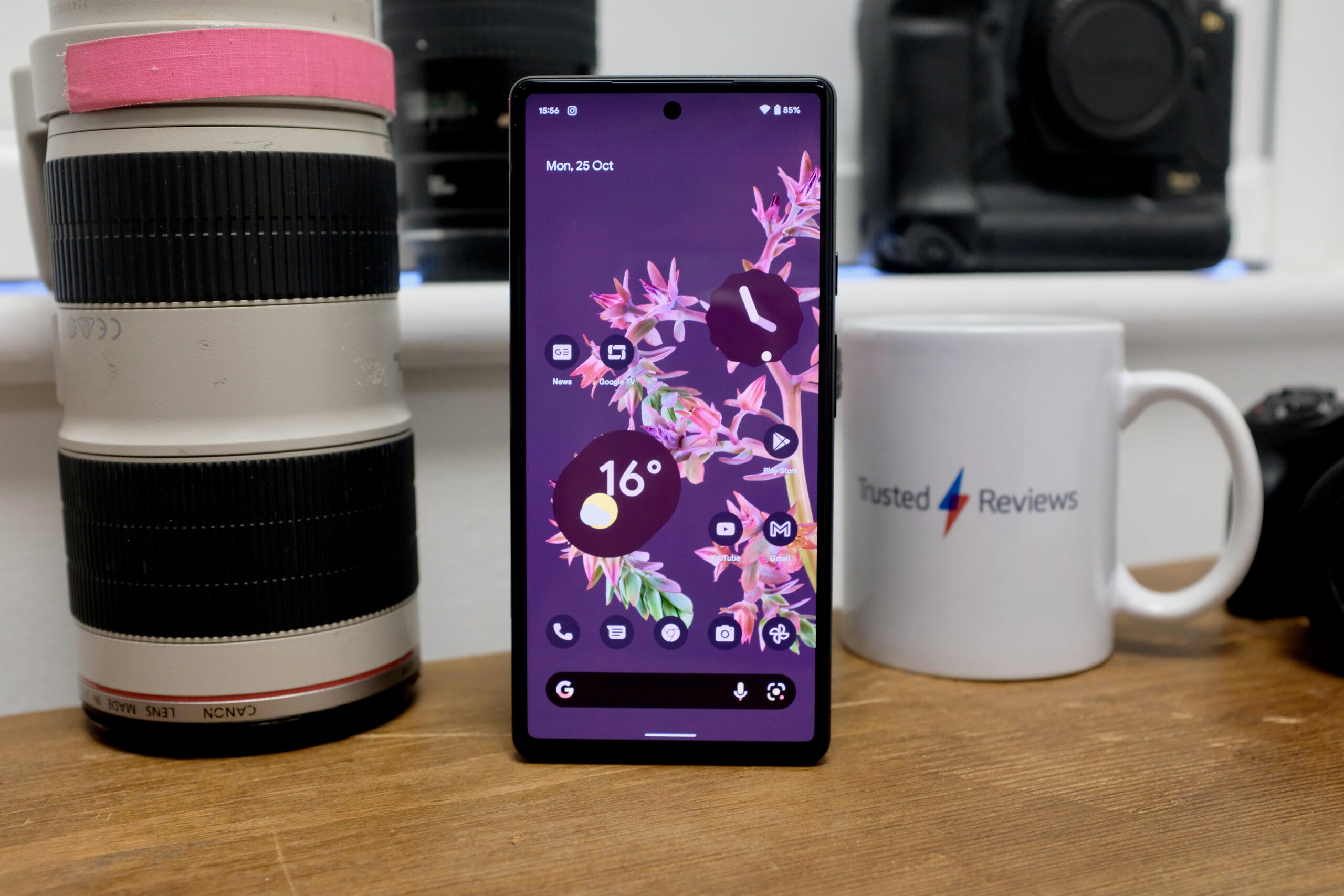
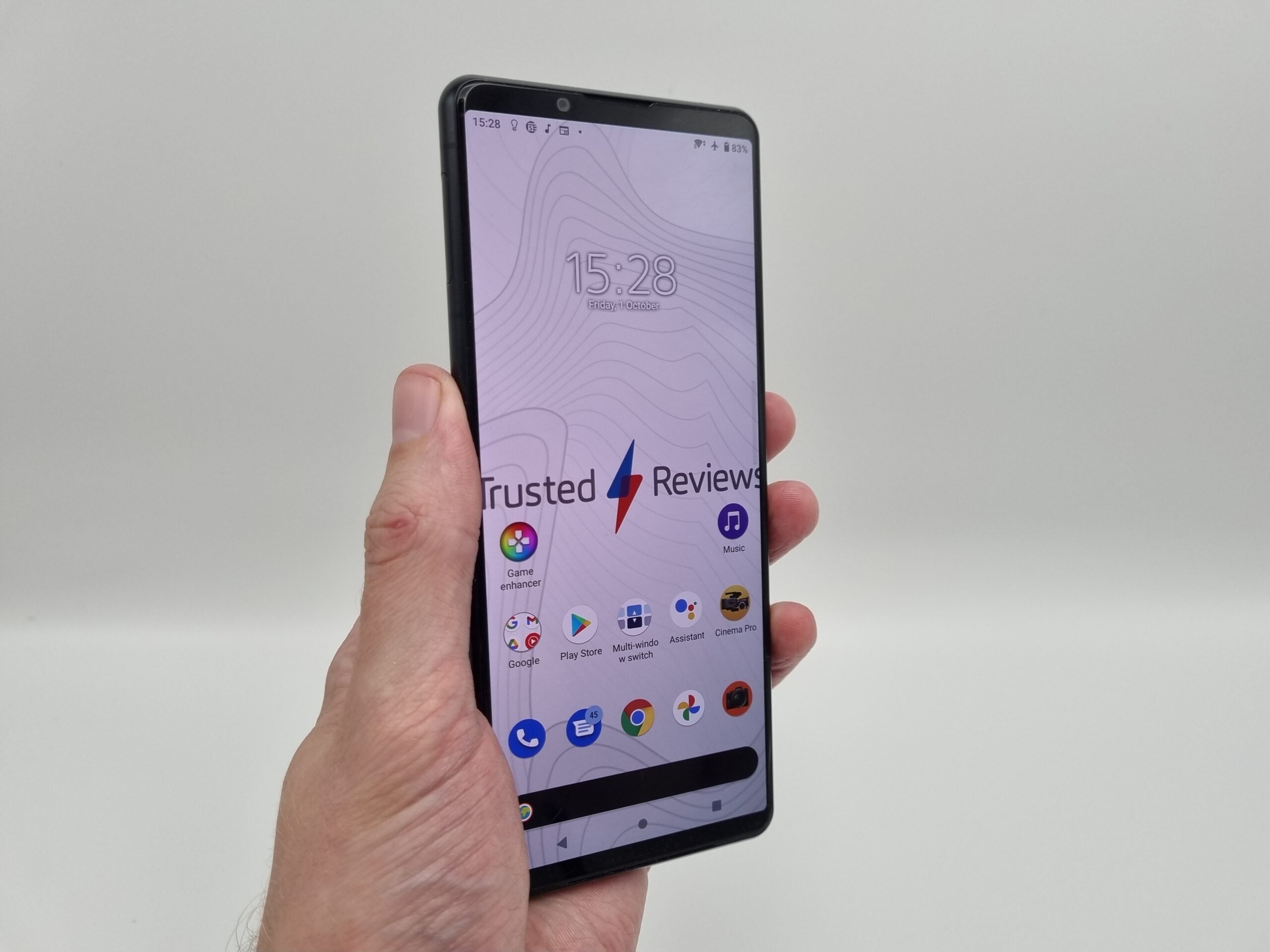
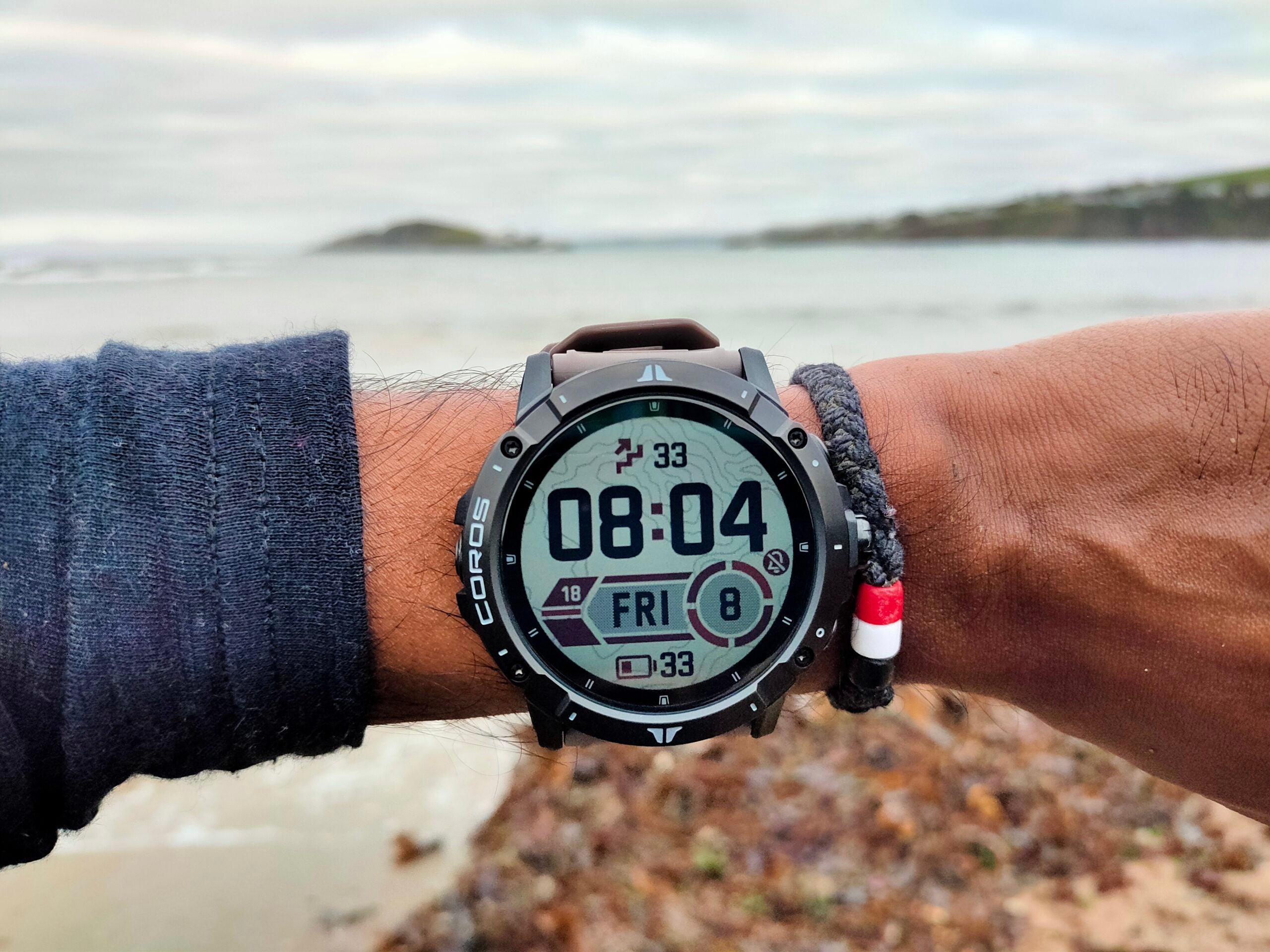
No comments